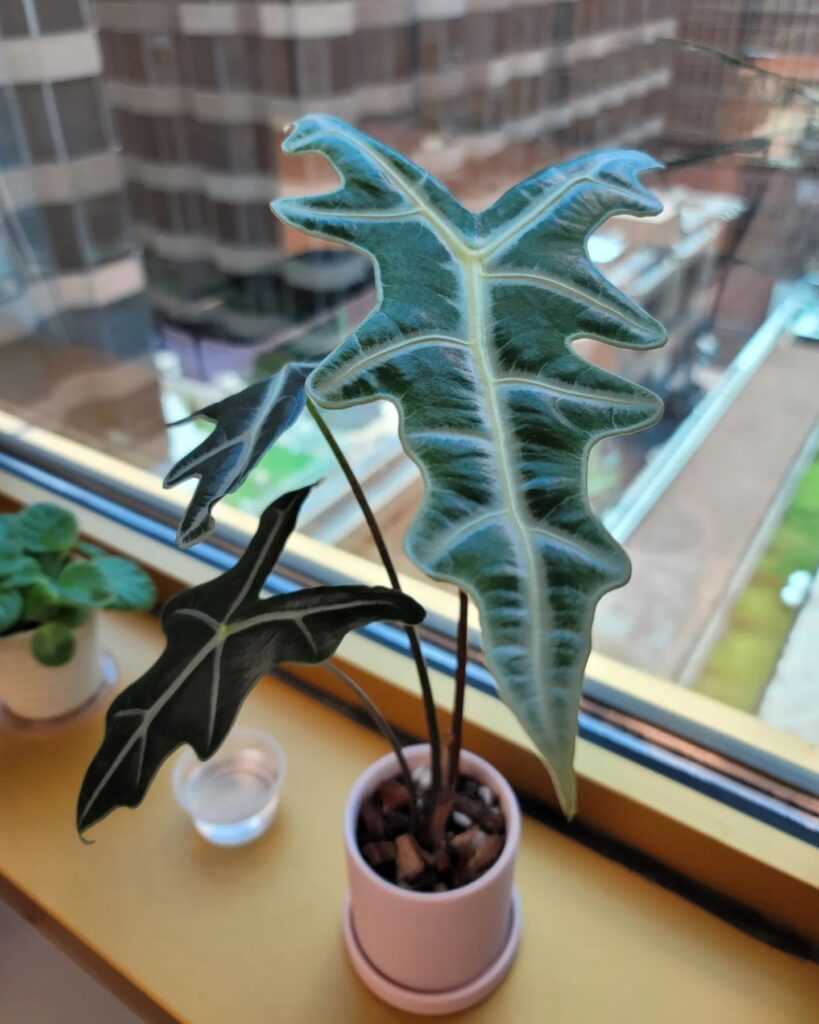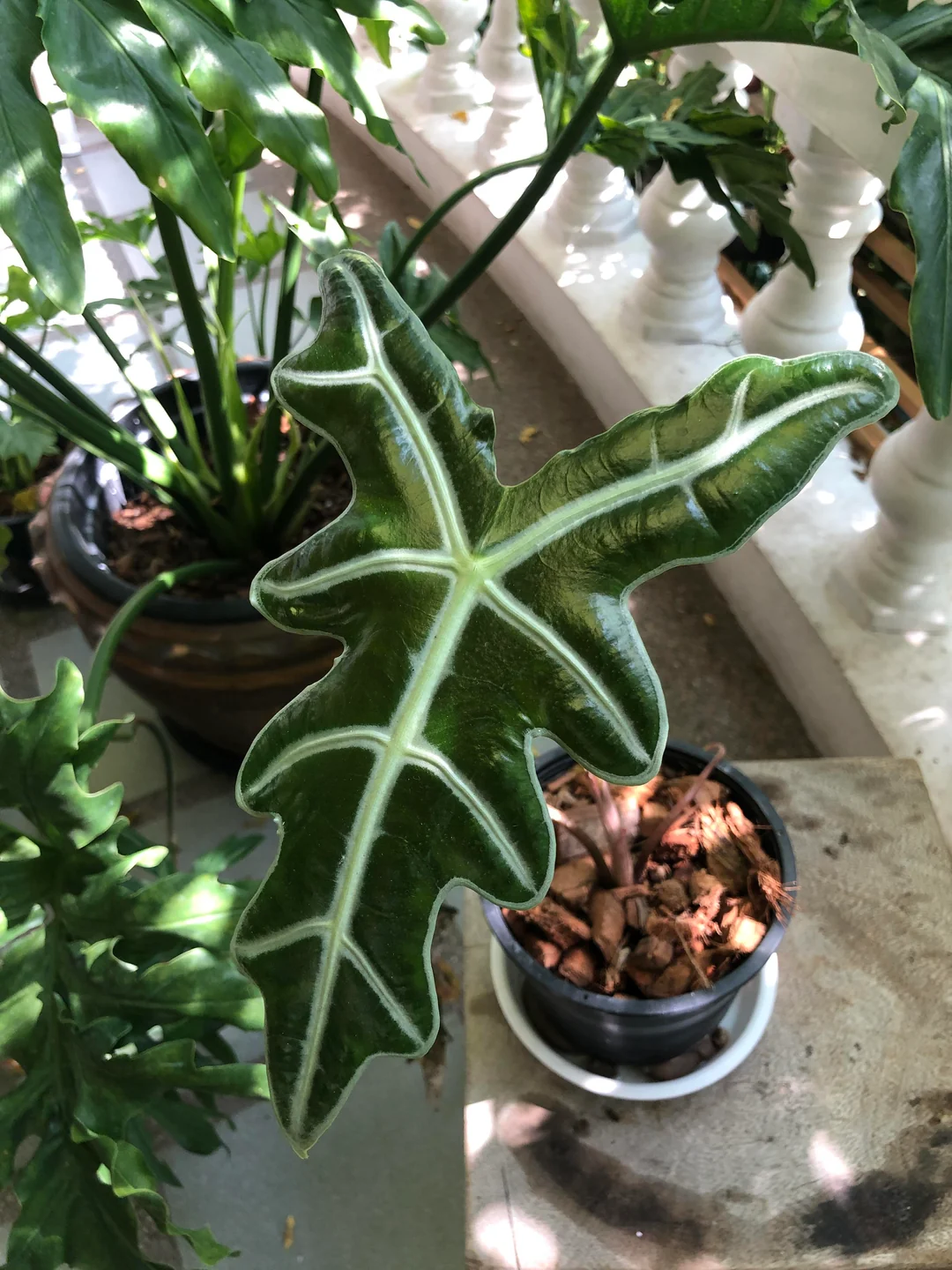Basic Information
Discover Alocasia nobilis, a rare houseplant with unique foliage. Care for it attentively for a rewarding challenge. Our guide will help you provide the perfect environment so it thrives and brings a touch of the tropics to your home.



Light
Alocasia Nobilis demands bright, indirect sunlight to thrive. Direct exposure can lead to leaf burn, while too little light causes leggy growth and leaf loss. The ideal spot is near an east- or west-facing window where it receives filtered morning or afternoon light. Keeping the plant a few feet away from the window or using a sheer curtain can provide the perfect lighting balance.
Water
Alocasia Nobilis needs consistent moisture but hates soggy soil. Water when the top inch of soil is dry. Reduce watering frequency during winter and avoid letting water sit in the saucer to prevent root rot.
Soil
The ideal soil for Alocasia Nobilis is a well-draining mix that holds some moisture but allows excess water to pass through. A combination of peat moss, perlite, and vermiculite offers the right structure. Incorporating organic matter like cococoir enhances soil fertility and structure. The soil should be aerated and light, enabling the roots to breathe and grow efficiently.
Temperature
Alocasia Nobilis favors a warm and stable environment, thriving in temperatures between 65-80°F (18-27°C). It’s sensitive to sudden temperature changes and drafts, so avoid placing it near air conditioning vents, heaters, or fluctuating areas. Consistent warmth is key to its growth, with special attention during seasonal changes to maintain a stable environment.
Humidity
High humidity levels, around 60% or higher, are crucial for Alocasia Nobilis. In dryer home environments, use a humidifier, place the plant on a pebble tray with water, or group it with other plants to create a micro-humid environment. Misting can help but should be done cautiously to avoid leaf diseases. Regularly checking humidity levels will ensure the plant is receiving its ideal moisture in the air.
Fertilizer
Fertilize Alocasia Nobilis monthly during its growing season with a balanced, water-soluble fertilizer. Opt for organic fertilizers for a gentle approach, reducing the risk of chemical buildup in the soil. During the dormant period in winter, cease fertilization to avoid overwhelming the plant when it’s not actively growing.
Growth Rate
Alocasia Nobilis displays a notable growth rate in spring and summer with adequate care, including proper light, watering, and fertilization. Pruning helps maintain its size and shape and encourages healthier growth. During winter, its growth may slow or pause due to dormancy, requiring reduced watering and no fertilization.
Pet Safety
All Alocasia, including nobilis, are toxic when ingested, posing a risk to pets and children. Keep the plant out of reach to prevent accidental consumption.
Grow in Semi-Hydro
- Alocasia plants excel in Semi-hydroponics (LECA/Pon) due to their natural inclination for root growth and humidity.
- Successfully transitioning Alocasia to Semi-hydroponics is enhanced with a Nutrient Stagnant Wicking (NSW) setup.
- Alocasia roots adapt seamlessly to the water in LECA/Pon, with quick resolution of any root hair issues in NSW setups.
- Fertilizer includes a nutrient mix concentration of approximately 800-1000ppm.
- These plants are versatile in different temperature and humidity settings, thriving in controlled environments.
- Long-term care involves maintaining a constant water reservoir and performing occasional system flushes for sustained growth.
Tips
- Rotate the plant regularly for even growth.
- Flush the soil periodically to remove salt build-up from fertilizers.
- Reduce watering during dormant winter months.
- Use a humidity tray instead of misting to maintain ambient moisture.
- Support tall stems with a moss pole or stake to prevent toppling.
By observing your plant’s responses and adjusting care routines accordingly, your Alocasia nobilis can thrive as a stunning addition to your indoor plant collection
Happy planting! 🌱


